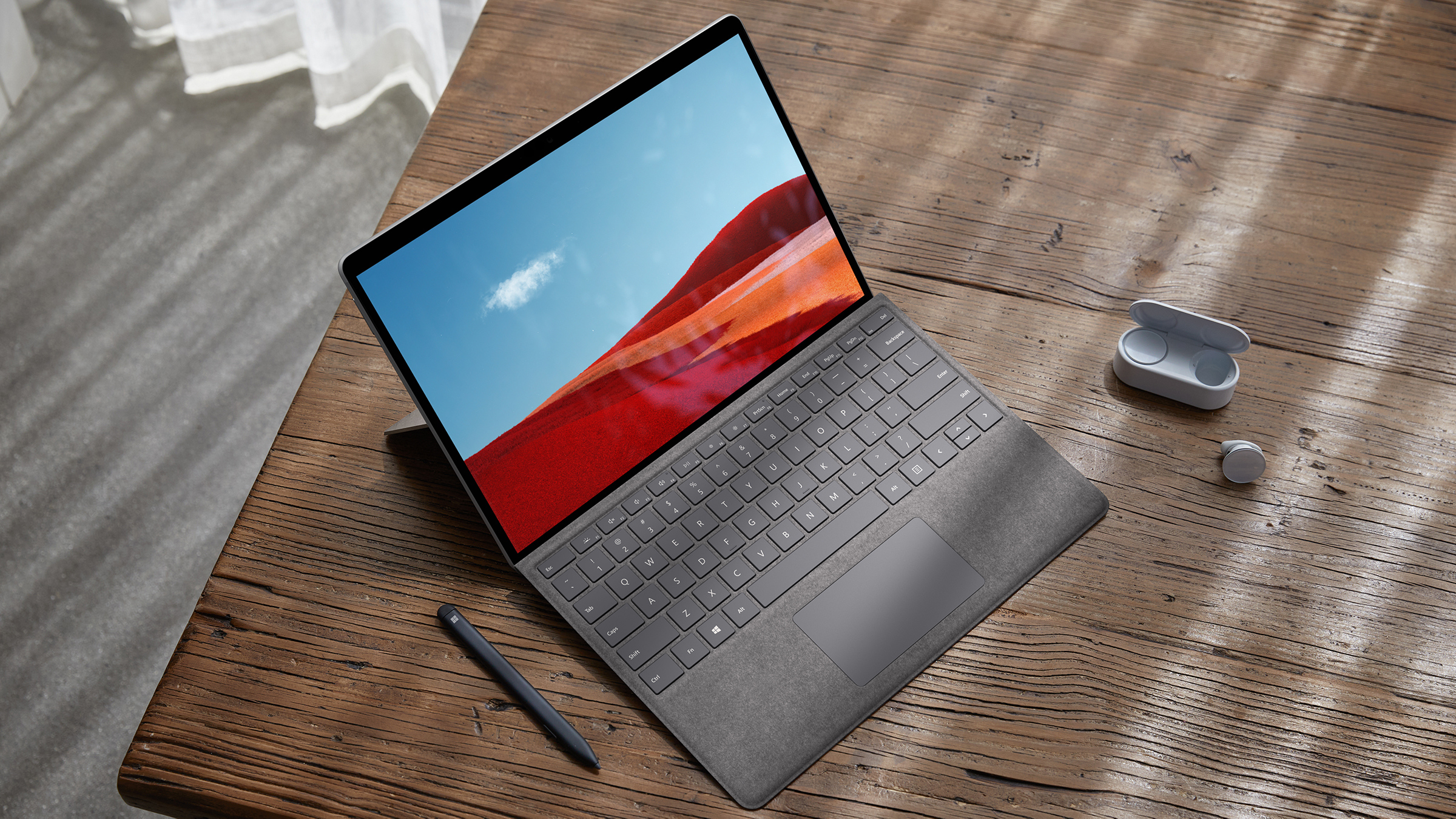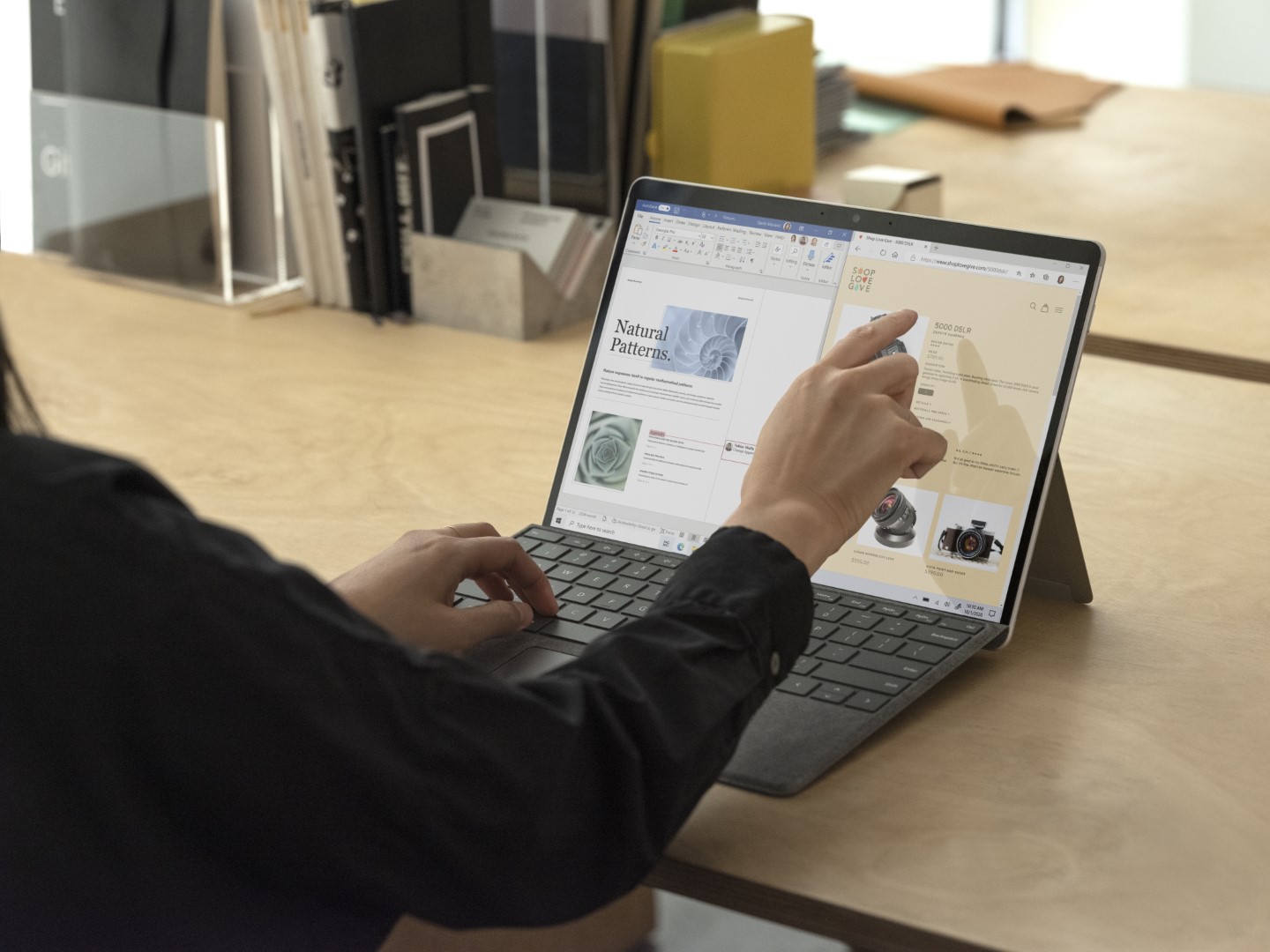Microsoft Surface Pro X with SQ2 chip unveiled — starts at $1,499
Has Microsoft solved the Windows 10 on ARM problem?

When Microsoft announced the first Surface Pro X last October, the premise of extreme portability and always-on connectivity were enticing, but the reality didn't really live up to that promise.
Microsoft is back again with the Surface Pro X (2020) and it features a new custom Microsoft SQ2 ARM processor that supposedly delivers much-improved performance along with superior battery life that could redeem some of the faults of its predecessor.
- Microsoft Surface Duo review
- Microsoft Surface Headphones 2 review
- Microsoft Surface Go 2 review
Here's a look at the new Microsoft Surface Pro X (2020), which will likely go toe-to-toe with the ARM-based MacBook with Apple Silicon when it launches later this fall.
Pre-order Surface Pro X
- Surface Pro X pre-order with new Qualcomm Snapdragon SQ2 configurations
Microsoft Surface Pro X (2020) price and release date
The Surface Pro X (2020) with an SQ2 chip will start at $1,499 with 16GB of RAM and a 256GB SSD. Upgrading to a 512GB SSD raises the price to $1,799, but don't forget you'll need to add the cost of the keyboard and possibly the stylus, which can take it up near $2,000.
You can pre-order directly from Microsoft.com starting today and it will be available at select retailers starting on October 13.
Microsoft Surface Pro X (2020) design

There are no major design changes from the original Surface Pro X, which is a reasonable decision from Microsoft as our reviewer said "The Surface Pro X is as premium as any tablet we've tested."
The new version adds a Platinum color option to the Matte Black and the Surface Pro X Keyboard now comes in Ice Blue, Poppy Red, and Platinum rather than only Black.
Sign up to receive The Snapshot, a free special dispatch from Laptop Mag, in your inbox.
Otherwise, the physical hardware is virtually unchanged with a thin anodized aluminum chassis and the familiar kickstand built into the rear of the tablet.
While it isn't going to challenge the nearly non-existent bezels of the Dell XPS 13 (2020), the Surface Pro X comes close enough.

Ports remain limited with just two USB Type-C, a Surface Connect input, and a nano-SIM slot. While it's not an abundance of options, it's a solid array that will easily allow you to add on to the tablet.
The front-facing Windows Hello camera on the Surface Pro X was one of the best we've tested and it looks like the hardware is unchanged from last year, so that bodes well for the new model. The 10-megapixel rear-facing camera was less impressive and likely goes unused by many users, but it's back as well.
At just 1.7 pounds without the keyboard, the tablet is impressively light for a 13-inch device and it's also thin, coming in at 11.3 x 8.2 x 0.28-inches.
Microsoft Surface Pro X (2020) display
The 13-inch PixelSense display is the same touchscreen as last year's with its 2,880 x 1920 resolution and 3:2 aspect ratio.
Once we get it in for testing we'll see if there has been any improvement on the color accuracy which was a slight disappointment last year, while the brightness and vividness of the display were definite highlights.
Microsoft Surface Pro X (2020) performance

The performance of last year's Surface Pro X was the biggest letdown, so this is the area that will draw the most attention this year. Microsoft has given the Surface Pro X (2020) an upgraded Microsoft SQ2 custom ARM processor option coupled with a Microsoft SQ2 Adreno 690 GPU, but we will need to see whether this yields meaningful results in real-world and benchmark performance.
App compatibility was definitely a piece of the story for the performance issues on some apps on the Surface Pro X. Microsoft insists that it has seen additional developer support for Windows 10 on ARM over the last year and that we will see better performance from both native Microsoft apps as well as those from major players, like Google, Netflix, Spotify and more.
Microsoft Surface Pro X (2020) connectivity
While the inclusion of LTE remains a big benefit to some, the lack of 5G is interesting this late in 2020 with many tablets and smartphones having adopted the future-proof wireless spec.
On a similar note, the Surface Pro X (2020) lacks support for Wi-Fi 6, something that we are certainly coming to expect in premium laptops.

Microsoft Surface Pro X (2020) battery life
Given the size of the Surface Pro X, we were reasonably impressed with the 9 hours and 45 minutes that it managed in our testing last year, so Microsoft's claims of a boost to roughly 15 hours of battery life would certainly be a bit of a shocker.
Outlook

The Surface Pro X was a beautifully flawed piece of hardware when it was released last year. Ultimately, it was difficult to recommend due to its price when combined with the keyboard and stylus, and the existence of strong competition like Microsoft's own Surface Pro 7 or powerful tablets like the iPad Pro 12.9-inch (2020).
The boost to battery life is an interesting addition if it holds up and we will need to see if Microsoft's claims regarding the improved performance are accurate. If it does manage to hit on both of those upgrades then, while the price may still feel a bit high, the Pro X will at least perhaps serve a niche for those who value portability over price.
Sean Riley has been covering tech professionally for over a decade now. Most of that time was as a freelancer covering varied topics including phones, wearables, tablets, smart home devices, laptops, AR, VR, mobile payments, fintech, and more. Sean is the resident mobile expert at Laptop Mag, specializing in phones and wearables, you'll find plenty of news, reviews, how-to, and opinion pieces on these subjects from him here. But Laptop Mag has also proven a perfect fit for that broad range of interests with reviews and news on the latest laptops, VR games, and computer accessories along with coverage on everything from NFTs to cybersecurity and more.

